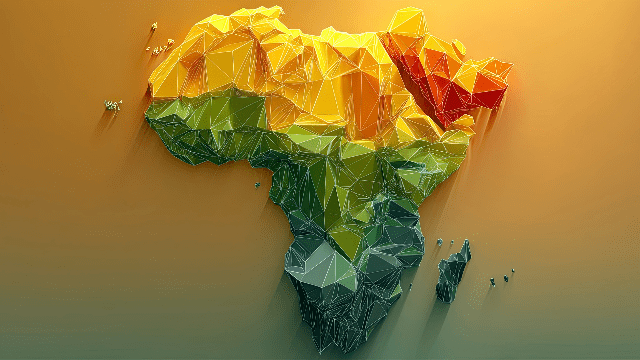Reflets Magazine #158 | Benoît Chervalier, Professor at ESSEC: ‘Africa is not Uniform’
Africa is often referred to in the singular, whereas in cultural, political and economic terms it is a highly heterogeneous entity. Benoît Chervalier, Executive Director of the ESSEC Business & Industry in Africa Chair, shares his analysis in Reflets Mag #158. You have free access to the article... sign up to read our upcoming issues!
Reflets Magazine: What are the key figures to bear in mind with regard to the African economy?
Benoît Chervalier: Africa is a continent with 1.4 billion inhabitants in 2025, 54 countries covering a surface of some 30 million km2, the equivalent of the USA, China, India and Europe. Africa also has a median age of 20 and a population set to reach 2.5 billion by 2050, i.e. the world’s largest active population in a context where several other leading countries such as Japan, China, Germany or Korea will experience a considerable decline in population. Africa’s GDP is around $3,000 billion dollars, which is roughly that of India at present.
RM: Beyond these figures, can we consider Africa as an economic entity in its own right, with issues both common to and distinct from the rest of the world?
B. Chervalier: Africa is often referred to by the media, organisations or public opinion in the singular, whereas in cultural, political and economic terms it is a highly heterogeneous entity. Regarding the economic aspect, we can differentiate what I call the ‘three African blocks’. The first block is 7 dominant economies representing 68% of the continent’s GDP. The second is 9 intermediary economies, including the Ivory Coast and Tanzania, accounting for 17% of GDP. The third, the biggest and most fragmented by far, is the 37 small, even tiny, economies, amounting to 12.6% of GDP.
RM: What are the major challenges faced by these blocks?
B. Chervalier: Countries in the third block need to improve their economic integration by strengthening intra-African trade on one hand, and their external attractiveness on the other. But how do you attract foreign capital and investments to a country with the economic weight of a mid-sized European city or a Chinese town, and with distinct and complex regulations and taxation? This is the goal of the treaty to establish the African Continental Free Trade Area (AfCFTA). At the other end of the scale, major economies such as Nigeria, South Africa or Egypt, who boast a sufficiently deep domestic market, would also benefit from more regular team play. To my mind, this topic is overlooked at present, and would require an intermediary solution between a purely global and very complex continental approach, and a highly-perilous country-by-country, individualistic approach.
RM: Are trends emerging from Africa’s various economies? Which ones?
B. Chervalier: Paths vary greatly, when you trace back 5, 10 or 15 years. Some countries stand out due to their vibrancy and ability to innovate and reform: Morocco, Benin and the Ivory Coast boast a vigorous growth rate, which in the Ivory Coast alone is 7% per year on average in the last 15 years. Conversely, other countries, such as Tunisia or South Africa, are performing poorly as a result of questionable policies and domestic challenges. We must add to these categories the countries in crisis or at war, such as Sudan or Libya, as well as those subject to several paradoxes, rich yet poor, innovative yet paralysed, such as Nigeria. The IMF forecasts that Africa will close 2025 with an average growth rate of 3.8%, but you can understand why this figure is fairly meaningless.
RM: What are the prospects for African economies?
B. Chervalier: Here once more, we observe similarities and numerous divergences. North Africa is not at all homogeneous: Morocco is experiencing an economic shift, Algeria is relatively closed from a trade perspective, while Tunisia is facing all kinds of challenges. West Africa is experiencing the strongest and best-distributed economic growth, but Nigeria is an exception, with weak growth combined with a soaring population growth (the country is set to become the world’s third most populated), while the drive for greater autonomy by countries in the Alliance of Sahel States could change the regional game. Central Africa is characterised by its dependency on extractive activities, but strategies vary. While Cameroon, Gabon, Congo and Chad pursue diversification and a post-oil or gas economy, the Democratic Republic of Congo and Guinea, with abundant sources of bauxite, nickel and cobalt, struggle to develop their local processing capacities and to strengthen their practices of good governance and ‘fair value’, which means that their production remains in the hands of foreign powers. For the moment, East Africa is driven by Kenya and Ethiopia, but one faces budgetary challenges, the other political issues, particularly with Tigray and Egypt. Lastly, Southern Africa presents a paradox. South Africa, the continent’s leading economy, suffers from sluggish growth due to a multitude of structural problems, while more modest countries, such as Mauritius, are growing thanks to promising sectors. In short, Africa is not uniform.Published in Reflets Magazine #158. Read the issue (in French) exceptionally in free access. Subscribe to read our upcoming issues!
Interview by Louis Armengaud Wurmser (E10), Content Manager at ESSEC Alumni
Do you want more content? Join us now so that we can keep bringing you news about the ESSEC network.
Picture : © AdobeStock

Comments0
Please log in to see or add a comment
Suggested Articles


